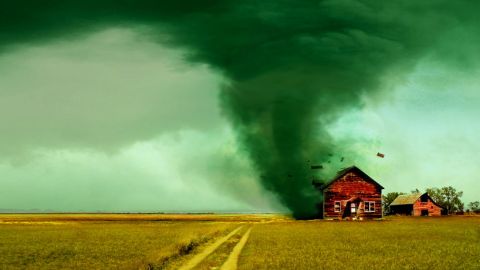Acts of God and Man: On Risk

In Acts of God and Man: Ruminations on Risk and Insurance,Michael Powers examines how risk impacts our lives, health, and possessions and how we can go about analyzing the uncertainty. In the following excerpt from the book, Powers discusses the morbidity principle:
In today’s business world, professional risk managers often construct extensive lists of pure and speculative risks, including every imaginable type of uncertainty to which individuals and firms are exposed. Among pure risks, one finds traditional “insurance” perils such as fire, wind, theft, disease, and professional negligence, along with more complex hazards such as substandard construction, inadequate security, technological obsolescence, and political instability. Speculative risks include real estate, common financial securities (stocks, bonds, commodities, etc.), and interest and currency-derivative products, as well as market- specific changes in the prices of raw materials, human capital, and end-of-line goods and services.
Fortunately, a remarkable simplicity underlies these myriad risks. Despite the great number of individual sources of risk, there are only a very few exposures subject to risk. These fundamental exposures are life, health, and possessions.
One then might ask: Why should we be concerned about the quality of life? I would argue that the following two principles provide the answer:
In short, the life exposure underlies all other types of exposures. For individuals and societies, the morbidity principle would have been particularly evident in the Old Stone Age, when human beings had developed useful tools, but were still primarily hunter- gatherers. At that time, quality-of-life exposures, although they existed, could not be separated easily from the life exposure because the loss of health (through injury or illness) or possessions (clothing, shelter, or hunting implements) would increase significantly the chance of death in the near future. Hence, in many cases loss of quality of life would be tantamount to loss of life.
The morbidity principle continues to apply to individuals and societies today, but not as dramatically. Despite the various “safety nets” that modern governments provide for their more vulnerable citizens, it is still an empirical fact that the injured and ill, as well as the economically poor, die at faster rates than others.
This is also true for societies at large, as can be seen in the declines of certain populations in Eastern Europe since the dissolution of the Soviet Union. With regard to corporations, reductions in revenue, market share, and/or profitability are in many cases harbingers of bankruptcy.
Although a cursory review of today’s financial products might give the impression that quality-of-life exposures actually overshadow the life exposure — after all, the only financial product that specifically addresses mortality is life insurance — the lost-gratification principle belies such a conclusion. If anything, the role of mortality is difficult to discern because it is so prevalent that we tend to overlook it.
The life exposure underlies all traditional insurance policies, whether held by individuals or commercial enterprises. This is because the policies are designed to provide reasonably quick medical attention or restitution of property, presumably before the policyholder’s life terminates. In addition, the life exposure is fundamental to all financial transaction risks.
Lenders, whether they be individuals, corporations, or government bodies, must be compensated for the possibility that they will cease to exist before their loans are repaid; and the early death of a borrower can transform this possibility into a certainty.
In other words, mortality is the essential reason, even in an economy with no expected change in either income or prices, “a dollar today is worth more than a dollar tomorrow,” and thus the reason the nominal risk- free rate of return (oft en taken to be the nominal return on a U.S. Treasury bill) must be strictly greater than 0.
Excerpt courtesy of Columbia Business School Publishing.
Image courtesy of Shutterstock.





